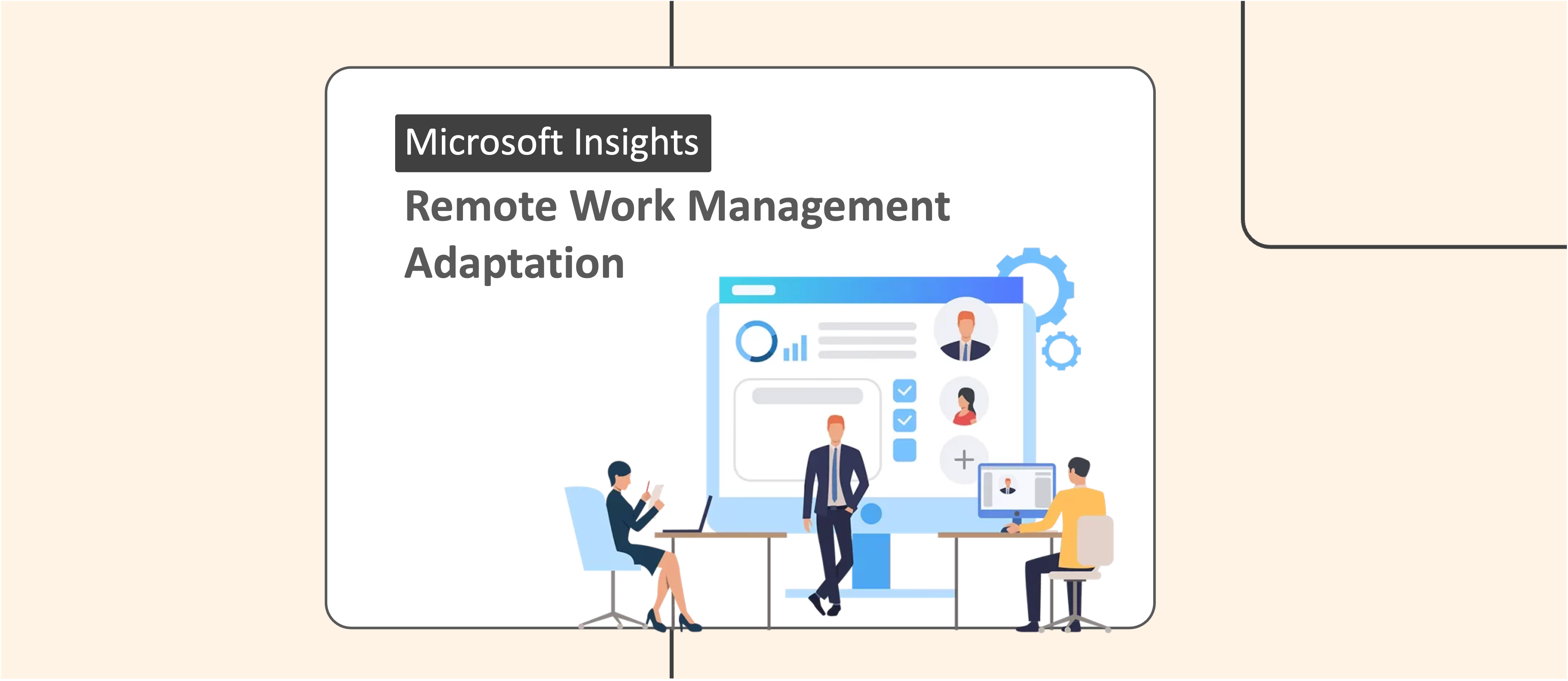The COVID-19 outbreak has triggered a global shift towards remote workforce management, with employees across the world working from home full-time.
But how can organizations ensure that their remote teams maintain the same dynamic and trust as in-house staff? The answer lies in leveraging technology to build connections and empower employees to work effectively.
Top Insights by Microsoft for Better Remote Workforce Management
1. Do more in the Cloud:
Transitioning to cloud-based solutions is essential for effective remote workforce management. This allows employees to access documents, data, and information from anywhere while utilizing advanced cloud technologies like AI to enhance productivity.
2. Modern Devices:
Giving your employees laptops equipped with Microsoft tools and apps, you will get a powerful future ready workforce
3. Stay Secure:
Seamless cybersecurity integration within devices and apps ensures that employees are protected without compromising their user experience. This is vital in maintaining a secure remote workforce.
4. Powerful Intranet:
SharePoint empowers your organization to collaborate, share information, and use applications to help make your employees more productive and transform business process. When you create a SharePoint and document library, you can immediately make a space for it on Teams (and vice versa), making it even easier and quicker to collaborate.
5. Virtual Workspace:
Microsoft Teams makes it easy to communicate and collaborate on work. It works across all devices and with group chat, online meetings, calling, and web conferencing, you can stay in touch easier than ever.
- Online learning: Re- and up skilling is a vital part of employee engagement. Not only are skilled employees 8.4 percent more productive, but 70 percent of employees are more likely to stay at their workplace if they have training and development opportunities.
- Time to Meet: Communicate, Collaborate, Video Calling, organize team meetings.
A recent report released by Microsoft suggest “remote work is here for good”. There’s no doubt that while the shift to working remotely has been a challenge, tools like Slack, Zoom, and Microsoft Teams have made it relatively easy to stay connected and productive.
This idea is reflected in the sheer number of meetings happening in Microsoft Teams each day. We’ve seen a new daily record of 2.7 billion meeting minutes in one day a 200 percent increase from 900 million on March 16.

Conclusion
s organizations continue to empower their employees to work from home, effective remote workforce management systems become increasingly critical. Optimizing performance and mitigating security risks is essential in this evolving landscape. By embracing technology and fostering a culture of collaboration, businesses can navigate the future of work successfully.




